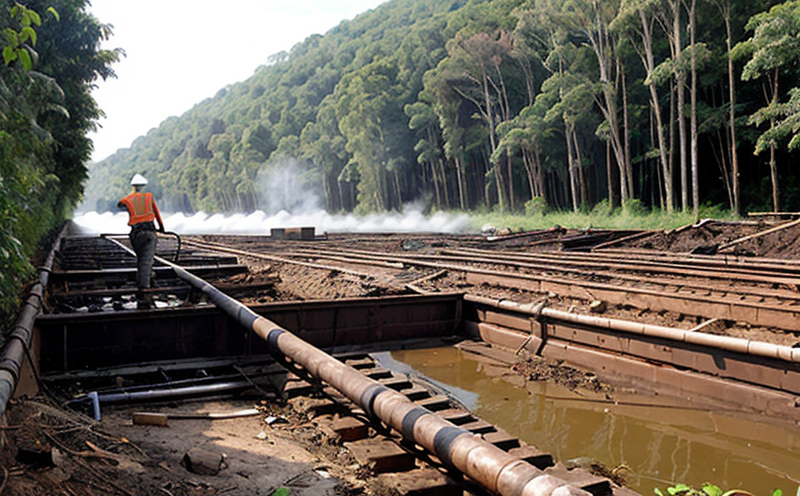ISO 14010 Guidelines for Environmental Auditing Test
The ISO 14010 series of standards provides a framework and guidelines for environmental auditing. This service specializes in conducting audits that conform to these international norms, ensuring organizations can meet their environmental compliance objectives effectively. The standard focuses on the principles and requirements for environmental management systems (EMS) audit programs, which are essential tools for identifying, evaluating, and addressing environmental impacts.
The ISO 14010 guidelines help ensure that audits are conducted in a systematic manner, considering all relevant factors such as legal compliance, operational practices, and stakeholder expectations. This service ensures that the environmental auditing process is robust and adheres to best practices defined by international standards. Our team of experts will guide you through every step of the audit process, from initial planning to final reporting.
Environmental audits are critical for organizations aiming to demonstrate their commitment to sustainability and reduce operational risks associated with non-compliance. By aligning your internal processes with ISO 14010 standards, you can enhance your reputation as a responsible business entity while minimizing legal and financial repercussions. The service includes detailed documentation of all audit findings, which is crucial for tracking progress and implementing corrective actions.
Our environmental auditors are trained to apply the latest methodologies and tools in line with ISO 14010 guidelines. This ensures that audits cover a broad spectrum of potential risks, including air quality, water usage, waste management practices, and energy efficiency measures. We use state-of-the-art technology and software solutions to gather data accurately and efficiently.
The audit process typically involves several key stages:
- Initial planning: Identification of relevant environmental aspects and impacts
- Planning the audit program: Defining scope, objectives, and criteria
- Fieldwork: Data collection through inspections, interviews, and document reviews
- Evaluation and reporting: Analysis of collected data against established benchmarks
We provide comprehensive reports outlining our findings along with recommendations for improvement. These reports are tailored to meet specific organizational needs, ensuring that they serve as valuable tools for decision-making.
| Aspect of Audit | Description |
|---|---|
| Legal Compliance | Verification that all applicable laws and regulations are being adhered to. |
| Operational Practices | Evaluation of current practices against best environmental management practices. |
| Stakeholder Expectations | Assessment of how well the organization meets stakeholder demands and expectations regarding its environmental performance. |
Industry Applications
The ISO 14010 guidelines find application across various industries where environmental considerations play a significant role. Key sectors include manufacturing, construction, transportation, and utilities.
- Manufacturing: Identifying emissions sources and waste streams to promote cleaner production processes.
- Construction: Monitoring resource efficiency in building projects from design through completion.
- Transportation: Assessing fuel consumption, noise levels, and other environmental factors affecting public health.
- Utilities: Ensuring sustainable management of water resources and reducing greenhouse gas emissions.
International Acceptance and Recognition
The ISO 14010 series is widely accepted and recognized globally, making it an ideal framework for international businesses operating in diverse markets. Here are some key points about its acceptance:
- Australia: The standard has been adopted by regulatory bodies to ensure compliance.
- New Zealand: ISO 14010 is used extensively within government agencies and private enterprises.
- United Kingdom: Recognized by the Environment Agency for environmental auditing purposes.
- European Union: Used as a benchmark for assessing EMS in member states.
Use Cases and Application Examples
Here are some practical examples of how ISO 14010 can be applied:
| Use Case | Description |
|---|---|
| Corporate Sustainability Reporting | Companies use ISO 14010 to ensure their sustainability reports are accurate and transparent. |
| Supply Chain Management | ISO 14010 helps organizations assess the environmental impact of suppliers, ensuring ethical sourcing practices. |
| New Product Development | Innovative products are designed with minimal environmental footprint in mind, leveraging ISO 14010 principles. |





